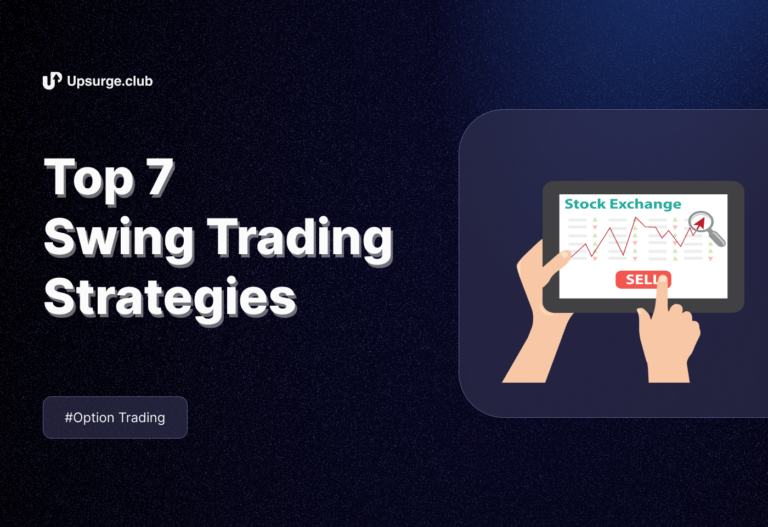Options trading allows the trading of an underlying asset without directly owning it. Options give traders the right but not the obligation to buy or sell an asset at a predetermined price (known as the strike price) within a specified time frame.
This flexibility opens up a world of possibilities for traders, but it also comes with its own set of risks. This article provides an overview of options trading, explaining what is option trading and how it works in the financial market.
What is Option Trading?
Options trading involves buying and selling options contracts, which are financial derivatives based on the value of an underlying asset, such as stocks, indices, commodities, or currencies.
Options give the buyer the right but not the obligation to buy (in the case of a call option) or sell (in the case of a put option) the underlying asset at a specified price (known as the strike price) within a certain period of time (until expiration). In return for this right, the buyer pays the seller a premium.
Unlike buying stocks outright, options trading allows traders to speculate on the price movement of assets without owning them, offering potential opportunities for profit through leverage and flexibility.
In options trading, there are two main types of contracts: call options and put options.
- Call options: They give the holder the right to buy a stock at a specified strike price before or on the expiration date. Call options are typically used when traders expect the underlying asset’s price to rise.
- Put options: They give the holder the right to sell a stock at a fixed strike price. Put options also have expiration dates.
Options trading can be used for speculation, hedging, or generating income through various trading strategies.
How Does Option Trading Work
Suppose you are interested in trading options for shares of a company, ABC Ltd., currently trading at ₹100 per share. You believe the stock price will increase in the next month, so you decide to buy a call option contract.
You purchase one call option contract for ABC Ltd. with a strike price of ₹110 and an expiration date one month from now. Each option contract represents the right to purchase 100 shares. You pay a premium of ₹5 per share, totalling ₹500 (₹5 premium * 100 shares per contract).
Scenario 1: Stock Price Rises
If, by the expiration date, the price of ABC Ltd. shares rises above ₹110, let us say to ₹120 per share, your call option becomes profitable. You can exercise your option to buy shares at the lower strike price of ₹110 and then sell them at the market price of ₹120, making a profit of ₹10 per share (₹120 market price – ₹110 strike price).
Since each contract represents 100 shares, your total profit would be ₹1,000 (₹10 profit per share * 100 shares). However, you also need to subtract the premium paid for the option contract, which was ₹500. So, your net profit from the trade would be ₹500 (₹1,000 profit – ₹500 premium).
Scenario 2: Stock Price Does Not Rise
If the stock price remains below ₹110 by the expiration date, your call option expires worthless. In this case, you lose the premium paid for the option contract, which was ₹500.
How to Trade Options?
If you are new to trading, the idea of trading options might seem daunting at first. However, with the proper guidance, option trading for beginners can be rewarding. Here are some simple steps on how to trade options:
1. Learn the Basics
Understand key terms like call options (betting on price rise) and put options (betting on price drop), strike price (agreed buying/selling price), expiration date (end of option validity), and premium (cost of option).
For in-depth knowledge, opt for the best option trading courses from Upsurge.club to enhance your skills and confidence in options trading.
2. Choose a Broker
To trade options, you will need a brokerage platform that offers options trading. Look for one that fits your needs and provides access to the markets you are interested in.
Opening an account with the broker involves sharing personal information and funding your account. This platform will be where you execute your option trades, so choose wisely based on your preferences and requirements.
3. Develop a Trading Strategy
Developing a trading strategy involves deciding how you want to trade options based on your goals and comfort level with risk. Consider strategies like buying or selling options and whether to use single-leg or multi-leg trades.
Research different strategies and their potential outcomes, and practice implementing them to see what works best for you. Remember, adjust your strategy as needed based on market conditions and your evolving trading objectives.
4. Place Your Trade
To place trades, use your broker’s platform. Specify the asset, option type (call or put), strike price, expiration date, and number of contracts.
For example, if you believe a stock will rise, buy a call option with a strike price below its current price. If you anticipate a drop, buy a put option with a strike price above its current price. After this, confirm and execute the trade.
Conclusion
Options trading offers a flexible way for traders to trade an asset without owning it. Now that you have learned the basics of options trading and how it works, you can take your knowledge further by exploring options trading courses on the Upsurge.club platform.
These courses offer valuable insights and strategies to help you navigate the world of options trading confidently and effectively.



